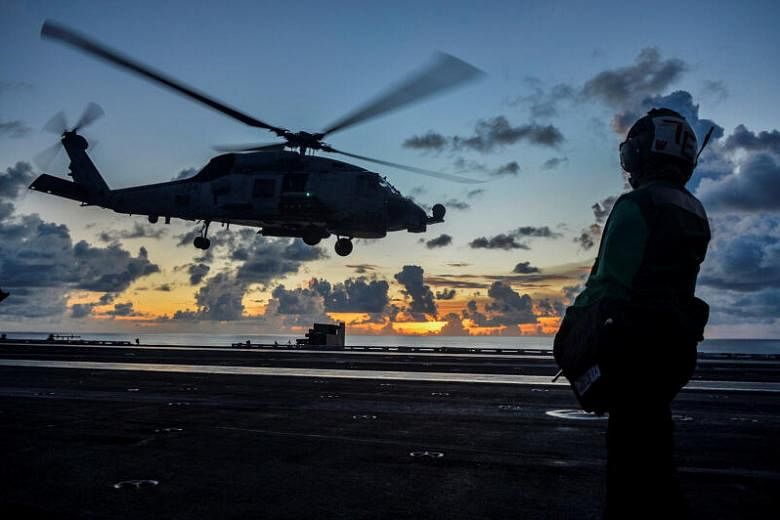MANILA (PHILIPPINE DAILY INQUIRER/ASIA NEWS NETWORK) - The Philippines and China have already signed the memorandum of understanding (MOU) and the terms of reference (TOR) to jointly cooperate in exploiting the oil and gas in the West Philippines Sea.
The missing element is the commercial agreement between China National Offshore Oil Corp (CNOOC) and Forum Energy on how they can partner to implement Service Contract 72 over Reed Bank, the site of the largest gas deposit of the Philippines in the West Philippine Sea.
Once that commercial agreement is signed, and then vetted by Philippine and Chinese officials, the formula for a peaceful settlement of the intractable South China Sea maritime dispute would have been found.
Where does this leave the US and its allies, whose navies have been conducting freedom of navigation and overflight operations (Fonops), including naval drills, in the exclusive economic zones (EEZs) of the South China Sea?
These Fonops assert that there are EEZs of the Philippines, Vietnam, Malaysia, Brunei, and Indonesia in the South China Sea. These Fonops, conducted at the rate of one Fonops every 45 days in the last two years, demonstrate that China's nine-dash line cannot impair such EEZs.
The MOU, TOR, and the commercial agreement between CNOOC and Forum Energy will affirm that the Philippines has an EEZ in the West Philippine Sea.
There will be an implied recognition by China that the Philippines has sovereign rights in its EEZ in the West Philippine Sea.
The Philippines has adopted the position that in its EEZ naval powers can conduct Fonops, including naval drills, in accordance with customary international law and the United Nations Convention on the Law of the Sea.
Vietnam has the same policy as the Philippines. Malaysia and Indonesia, while not expressly adopting the same policy, have not objected to Fonops, including naval drills, by the US and its allies in their EEZs.
Once China offers the same MOU and TOR arrangement to Vietnam, Malaysia, Brunei, and Indonesia, and these countries accept such arrangement, there will also be an implied recognition by China that these countries have their own EEZs in the West Philippine Sea. This means that the US and its allies can also conduct Fonops, including naval drills, in these countries' EEZs.
There being a recognition of Fonops in the EEZs of Asean coastal states, there will no longer be a need for the US and its allies to conduct frequent Fonops in these EEZs.
The US and its allies can conduct their Fonops in these EEZs once or at most twice a year, which was the situation before China aggressively asserted its nine-dash-line claim.
The remaining dispute will be on China's position that in its own EEZ in the South China Sea the Fonops of the US and its allies cannot include naval drills.
China's position, however, has been weakened considerably by the practice of its own navy, which conducts Fonops, including naval drills, in the EEZs of other countries.
The Chinese navy has conducted joint Fonops, including naval drills, with the Russian navy in the EEZs of the Mediterranean Sea and the Baltic Sea. The Chinese navy has also conducted military activities in the EEZs of Guam, Hawaii, Alaska, and Australia.
In short, outside of the South China Sea, the Chinese navy has behaved exactly like the navies of the US and its allies. China cannot continue this double standard for long.
China has now the largest navy in the world in terms of number of ships. China will have to act like any world naval power, conducting Fonops, including naval drills, in all the EEZs of the world.
Otherwise, the Chinese navy will be handicapping itself when it operates in the EEZs of other countries.
These developments will turn the South China Sea into a zone of peace. Both the US and China should welcome these developments which will reduce the possibility of armed conflict between the two nuclear-armed powers.
The strategic competition between the US and China on other matters - on trade, investments, and technology - will still continue.
Of course, these developments will materialise only if China decides that CNOOC can partner with Forum Energy to implement Service Contract 72.
The writer is columnist with the paper. The Philippine Daily Inquirer is a member of The Straits Times media partner Asia News Network, an alliance of 24 news media entities.

